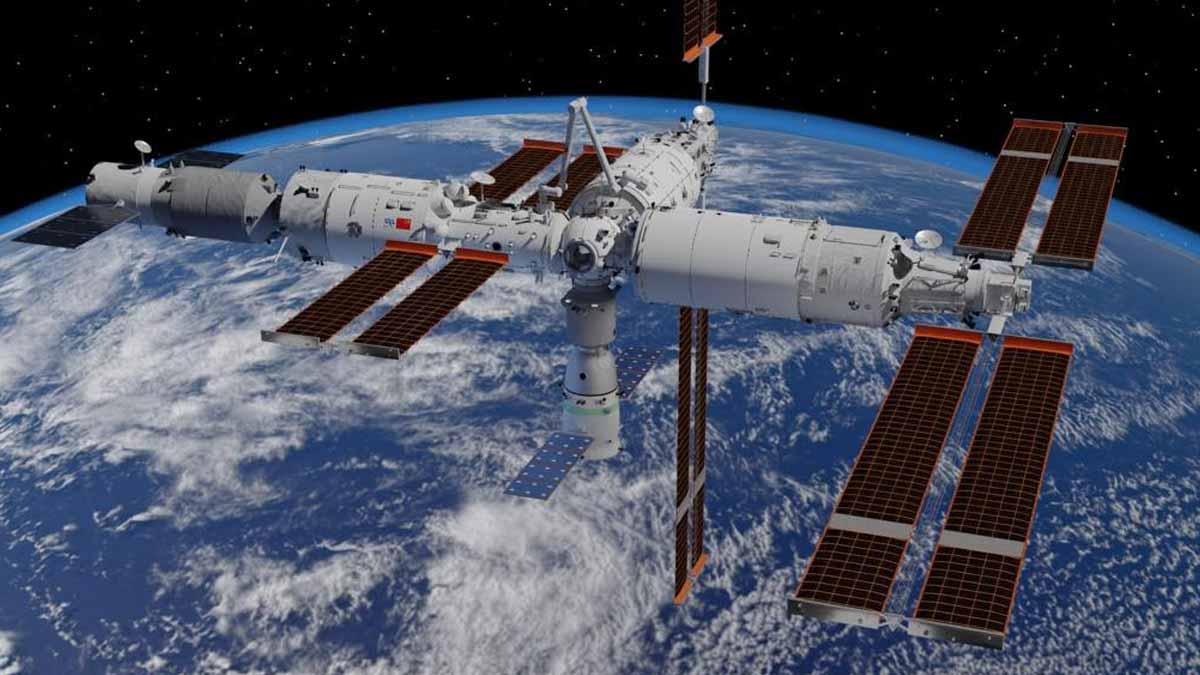Signals from orbit hint at a living puzzle that refuses easy answers. Inside a tightly controlled station, microbes evolve under radiation and microgravity, while engineers scrub and sensors watch. Between cleaning cycles and confined air, astronauts share space with organisms that adapt fast, hide well, and exploit small resources. The surprise raises urgent questions without giving away the ending, because space changes biology in subtle, relentless ways that even rigorous protocols cannot fully predict today.
A space microbe unlike its terrestrial relatives
In May 2023, samples taken aboard China’s Tiangong station, during the Shenzhou-15 mission, revealed a bacterium unknown on Earth. Researchers named it Niallia tiangongensis, linking it to resilient soil relatives. Genetic signatures suggest rapid adaptation under microgravity and heightened radiation, within confined air and relentless cleaning cycles. Conditions drive evolution.
The species relates to Niallia circulans, once grouped among hardy Bacillus. Like its cousins, it forms spores that endure heat, dryness, and chemical stress. Those capsules survive scrubbing and reawaken when conditions improve. A protective biofilm strengthens surfaces, limits desiccation, and helps communities coordinate responses to harsh, shifting environments.
What sets it apart appears oddly specific. It degrades gelatin, extracting nitrogen and carbon to build protective structures, while having shed other energy options. Such trade-offs reveal plasticity shaped by orbit. Because equipment and habitats share surfaces, astronauts need protocols that anticipate microbes exploiting narrow resources inside meticulously maintained modules.
What this means for astronauts and onboard habitats
The CHAMP program mapped the Tiangong habitation microbiome and compared it with the International Space Station. Researchers observed communities dominated by human-associated microbes, yet showing functional diversity. Differences reflect station design, cleaning routines, turnover, and airflow. Across platforms, selection pressures diverge, so similar species may behave differently in comparable modules.
Microgravity changes fluid dynamics, alters nutrient gradients, and reshapes biofilm architecture. Radiation increases DNA damage, so repair pathways gain emphasis. Confinement and frequent cleaning select for stress responses and attachment. Together these forces steer mutations and expression, favoring traits that cling, shield, and persist on metals, polymers, seals, and filters.
Comparisons with the ISS highlight overlap and divergence, which matters for hygiene strategies. Sampling frequency, swabbing methods, and sequencing depth influence what crews detect and how fast. Standardizing protocols improves comparisons, yet constraints remain. Managers tailor cleaning, airflow, and monitoring plans to hardware layouts, activity patterns, and timelines per facility.
Operational risks, best practices, and mission safeguards
Health questions remain open because pathogenic potential depends on context and vulnerability. Related species cause infections in immunocompromised patients, so teams remain cautious. Growth in orbit may harden resistance profiles, complicating choices. Medical officers emphasize surveillance, rapid diagnostics, and quarantine protocols that scale with symptoms, exposure histories, and inventories.
Biofilms foul seals, valves, and sensors, which raises operational risk beyond health. Metabolites corrode metals, while polymers accumulate slime that hampers flow and obscures readings. Clogged filters reduce air quality and strain systems. Because margins stay tight, astronauts rely on plans that schedule inspections, replacements, and cleanings before colonies fail.
Controls start with targeted agents matching materials and biofilm chemistry. Validated exposure times, agitation, and rinses improve kill rates without harming hardware. Point-of-use filtration, UV, and heat protect water loops, while airflow control limits dispersal. Checklists and training reinforce consistency, because execution quality decides whether microbes rebound or stay contained.
How monitoring protects astronauts during long-duration exploration
Monitoring begins with frequent swabs across vents, panels, handrails, and water lines. Sequencing identifies species, tracks mutations, and estimates biofilm potential. Dashboards flag hotspots when loads exceed thresholds set during commissioning. According to CHAMP, pairing genomic data with location tags helps predict pathways and time interventions before growth curves steepen.
When risk rises, teams adjust cleaning frequency, change agents, or replace materials that harbor films. Surface treatments reduce adhesion, while improved drainage and airflow reduce moisture. Because antimicrobials drive resistance, stewardship principles apply. Crews prioritize mechanical removal and containment, reserving biocides for targeted use where design changes cannot achieve control.
Predictive analytics improve timing. Algorithms correlate species shifts with humidity spikes, traffic patterns, and surface wear, then propose maintenance windows. Because resupply cadence limits options, decision support allocates wipes, filters, and replacement parts, ensuring crews act early rather than under schedule pressure.
What clean rooms taught us and why it matters in orbit
Ground lessons reinforce messages from orbit. Before NASA’s Phoenix Mars mission, clean rooms considered sterile revealed dozens of unknown species. Survivors carried genes for DNA repair and toxin resistance, explaining persistence despite filtration and disinfectants. These findings reshape assumptions about pre-launch sanitation and the likelihood microbes hitch rides to destinations.
Planetary protection depends on baselines that accept life rarely equals zero. Forward contamination risks affect science, while back contamination concerns returning hardware, samples, and people. Protocols gate access, segregate flows, and record chain-of-custody. Because missions embed humans, astronauts become carriers and guardians, enforce routines that protect science, equipment, and habitats.
Future lunar and Martian habitats extend these lessons. Long durations stretch supplies, so designs emphasize redundancy, cleanable surfaces, and onboard manufacturing of wipes and filters. Autonomous sensors guide responses when delays grow. Contingency trees ensure crews shift quickly from routine cleaning to isolation, repair, or shutdowns when thresholds trigger escalation.
Why managing microbial evolution in orbit cannot wait any longer
Microbial evolution in space is not a twist; it is an expectation that planning must absorb. From gelatin-eating specialists to equipment-fouling films, the signals are clear and actionable. Design that anticipates selection pressures, plus responsive monitoring, turns surprises into manageable tasks. With disciplined routines and flexible engineering, astronauts can keep habitats safe, science credible, and missions on schedule, even as unknown organisms keep testing boundaries at this demanding frontier. Staying ready means staying alive.

It’s difficult to find well-informed people about this subject, but you sound
like you know what you’re talking about! Thanks